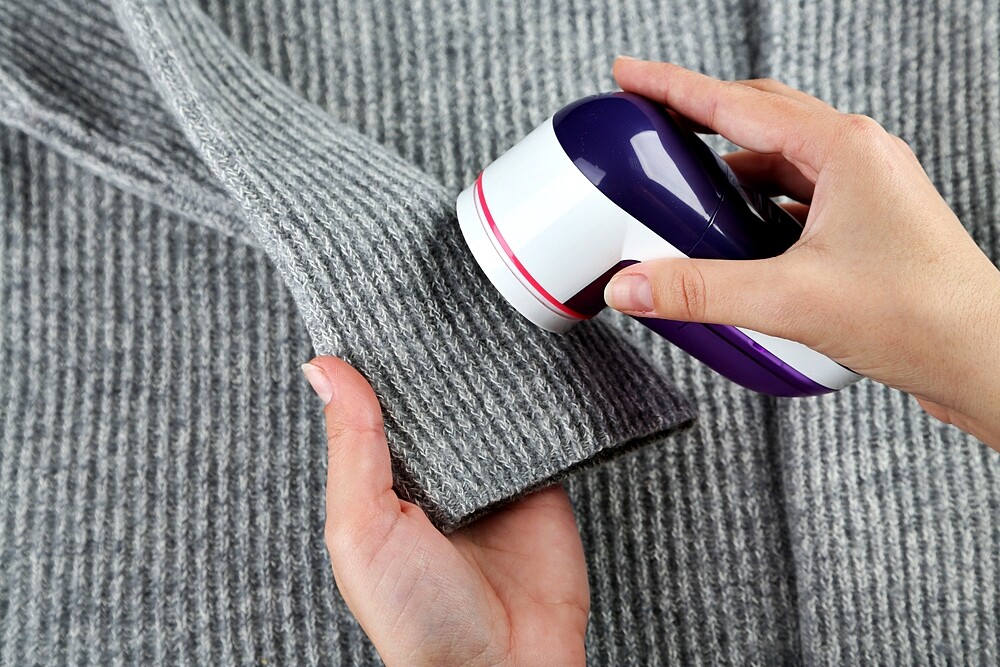They don’t do anything to us, but are simply annoying: Fluff on our clothes! We’ll tell you what you can do to remove it.
On sweaters, hats or coats fuzz quickly spreads! Especially these small nodules, the so-called pilling, as well as hairs that stick to clothing are simply annoying. But something can be done about it!
What’s pilling?
Pilling is the formation of nodules and fluff on textiles. It is often caused by friction, for example by movements during wearing or in the washing machine. This causes fibres to loosen and knot. Mostly short-fibre and synthetic fabrics are affected. This is no big deal, but it does disturb some people simply for optical reasons. Therefore we have collected the best hacks from the internet for you!
8 tricks for removing fluff: This is how it works!
For lint or hair or animal hair the good old lint roller is suitable. You don’t have one at home? Here are eight tricks how to remove it anyway, even stubborn lint:
- Adhesive tape: With a strip of adhesive tape you go over the fabric with the pilling or the hairs so that they stick to it.
- Lint razor: This device makes it easy to remove lumps. The risk of damaging the fabric is extremely low. You simply run the lint razor over the affected areas and then empty the collection compartment – that’s it! Available in stores for relatively little money.
- Clothes brush: Even a clothes brush is affordable for a small budget. With it you can also brush larger areas!
- Shaver: Be careful with this method, as the blade can easily damage the fabric. Shave slowly and carefully over pilling areas. The material should be spread out smoothly. Keep it taut when removing the fluff so that you do not cut into the material. An electric razor also serves this purpose!
- Scissors: Who doesn’t know them by the woolly hat, those little fluff rugs on the edge? Scissors are well suited for such areas. Use them to carefully cut off the fluffy areas.
- Pot scourer: Fluff should soon be a thing of the past with this too: Use the yellow side of an unused scouring pad and stroke in one direction over the lint.
- Rubber gloves: Put on a rubber glove and stroke over the garment. Fluff and hair should stick to it.
- Comb: A fine-toothed comb is ideal for combing out lint. You should also be careful with this method, because even a comb can pull out stitches!
Prevent fuzz
You can prevent increased fluff formation if you follow these tips:
- Before washing, turn the garments inside out to reduce friction. Laundry bags also help to protect the fabrics.
- Paper tissues, shopping lists and other things we like to forget in our bags should be taken out before washing!
- Wash sensitive textiles by hand and do without the dryer!
Many also use vinegar, which is supposed to reduce static electricity and thus prevent the formation of nodules. You should bear in mind that vinegar can attack the rubber parts of the washing machine. So: better not!

